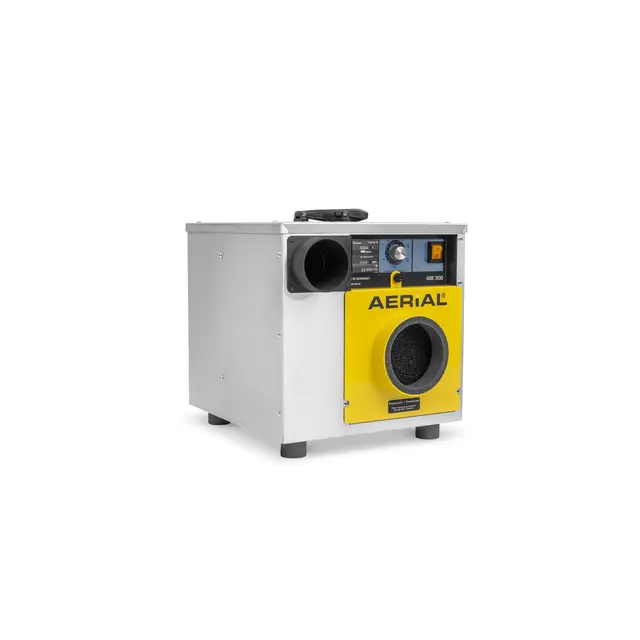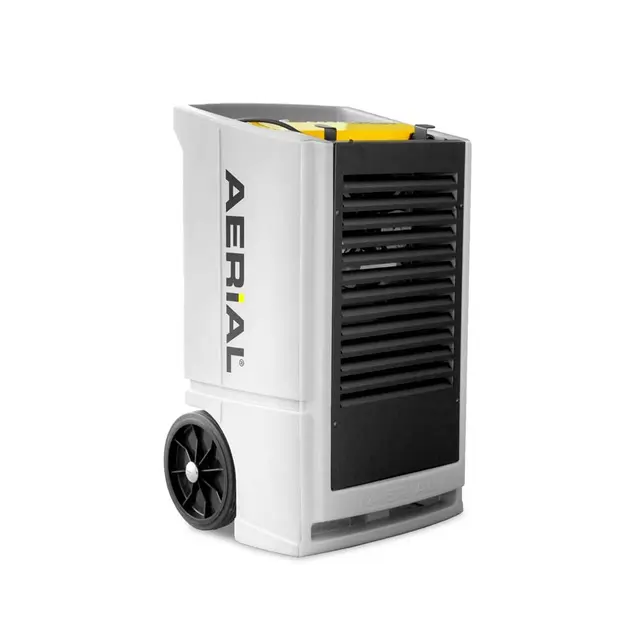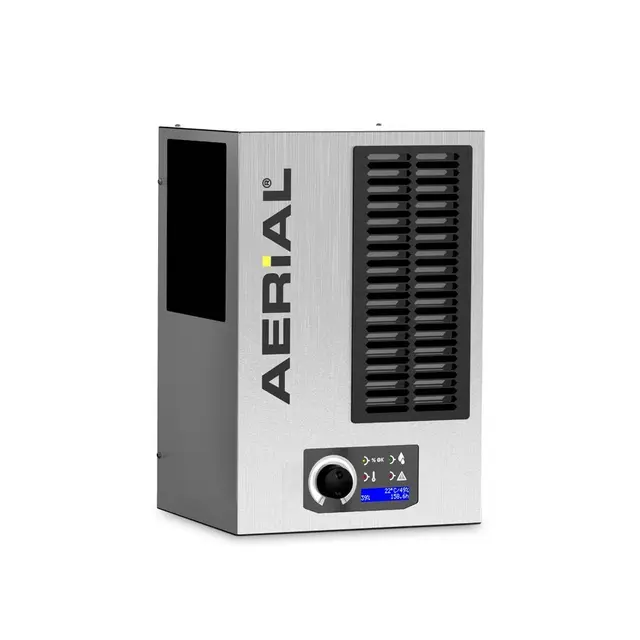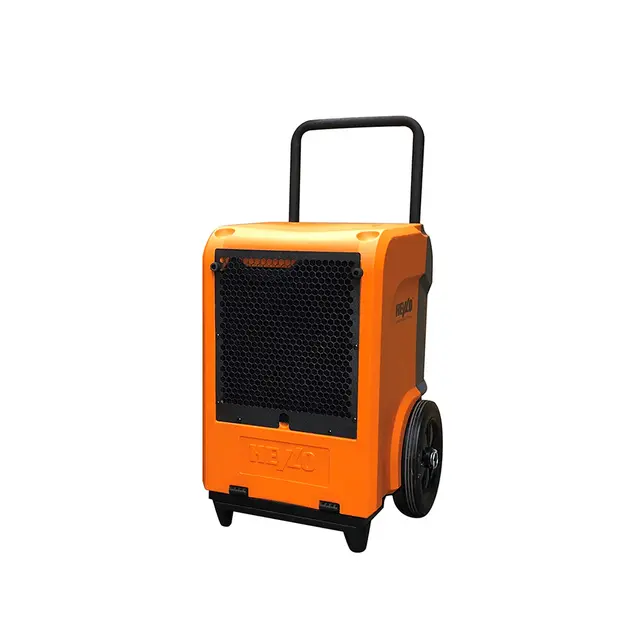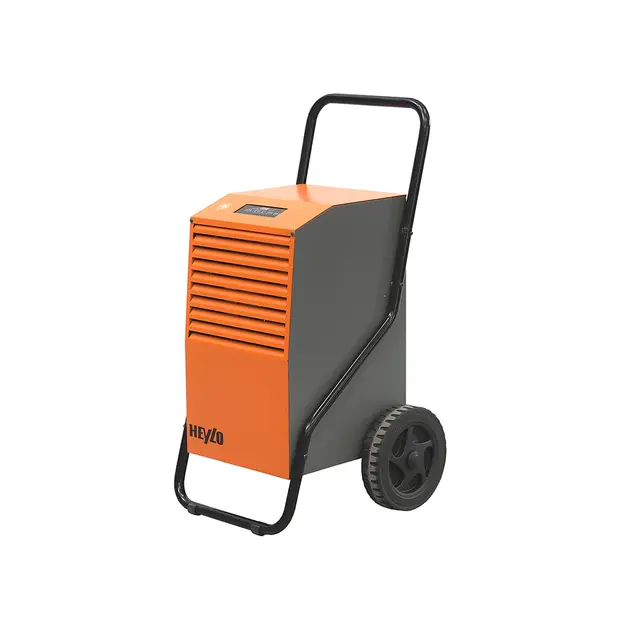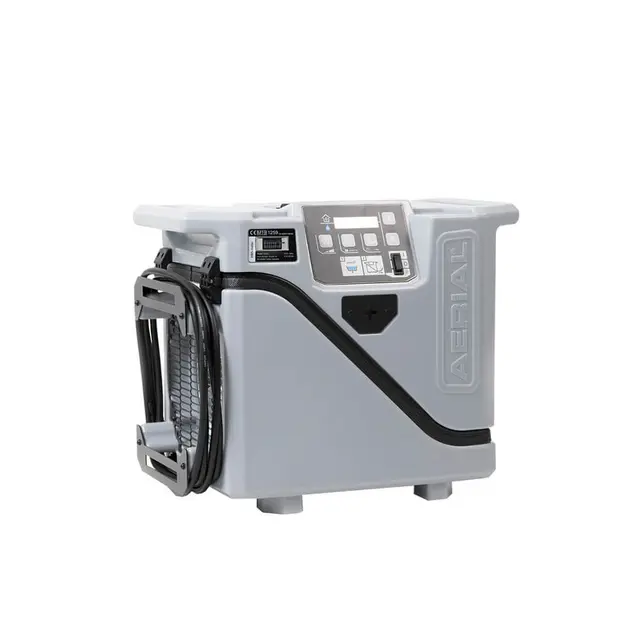Cost-efficient dehumidification of waterworks
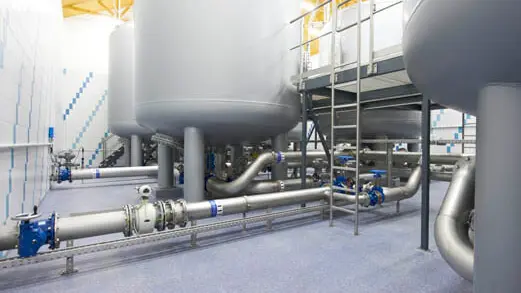
- Home
- Insights
- Humidity control and drying insights
- Cost-efficient dehumidification of waterworks
This article explains why dehumidification is important in waterworks of all sizes. Increasing maintenance costs while reducing installation lifetime, the high level of humidity that comes naturally with waterworks causes aggressive corrosion of water pipes, pumps and the building construction itself. It also accelerates fungus and mould growth. Moreover, you’ll learn what the environmental and financial arguments worth considering are when looking to find a dehumidification solution that fits your particular project.
Do I need dehumidifiers to remove moisture in waterworks?
Yes. Humidity conditions in waterworks facilities are quite extreme. Because of the high relative humidity, excessive condensation will form on all metal surfaces if you don’t dehumidify. Paint peels off water pipes and corrosion sets in. This increases maintenance costs and reduces the lifetime of the installations and the building itself. The humid environment also accelerates the growth of fungus and mould. Sometimes, mosquitoes thrive in the humid atmosphere and deposit their eggs in open water reservoirs, making it difficult to meet hygienic requirements. To avoid all of this, you need dehumidification.
Water and air temperatures, humidity and condensation in waterworks
Normally, the temperature in your waterworks is pretty constant throughout the year because it is more or less controlled by the well water, which is typically between 7-18°C all year round. The surface of your water pipes will be the same. You should maintain a temperature inside the waterworks that is roughly 2°C higher than the water temperature. Your RH level will fluctuate with the seasons but should always be kept low (between 55 and 65%) to avoid reaching the dew point because that creates condensation that results in rust and corrosion. This is particularly challenging during the summertime because of the difference between the inside and outside temperature.
What is the right dehumidification capacity for my waterworks facility?
Finding the right solutions for you is easy. Most often, it is enough to choose a dehumidifier that covers your room volume about twice by the given airflow of the dehumidifier unit. To find a specific and efficient solution for your facility all we need to know is the structure, size, average temperature and current relative humidity. Based on that, we can help do the math.
Keep the relative humidity between 55 and 65% to avoid
reaching the dew point in your waterworks facility
Can I monitor the energy consumption of my waterworks dehumidifiers?
Today, many waterworks are audited once a year by external auditors. These audits often require them to create a plan of action that demonstrates how they are planning to reduce power consumption over time. Obviously, they need to know the details of their current power consumption to do that. Depending on size and location-specific requirements, waterworks can require anywhere from 15 dehumidifiers for small village waterworks to +300 for large-scale city facilities. Running the units for many hours a day – which will most often be required – can potentially cost a lost of energy and money. So even without auditing requirements, it makes good sense to measure the energy consumption.
Therefore, we recommend choose dehumidifier solutions that come with integrated kWh counters. They can be analogue or digital. For auditing purposes, the kWh counter needs to be MID-approved and non-resettable.
In further support of that, some of the waterworks run complete tests once every five years where they test different dehumidifiers of the same size and capacity to find the solution that uses the least amount of energy. It makes good sense because in a time span of five to t10 years, new and less energy-consuming technologies will often have been developed and it is simple math to deliver hard evidence that replacing them is sound business. This is illustrated by this calculation:
Waterworks ‘ABC’ | Existing | 30% more efficient solution |
Number of dehumidifiers: | 100 | 100 |
Operation hours (day/year) | 8/365 | 8/365 |
Dehumidifier lifetime at ABC in years: | 6 | 6 |
kWh consumption: | 0.75 | 0.52 |
|
(adjusted to nearest round figure) | 0.20 | 0.20 |
Total operation hours per year: | 292,000 | 292,000 |
Annual kWh consumption: | 219,000 | 151,840 |
60,225 | 41,756 | |
Annual electricity costs in EUR: | 43,800 | 30,368 |
Lifetime costs in EUR: | 262,800 | 182,208 |
Improvements seen over six years | ||
kWh consumption reduction | 67,160 | |
Reduced CO2 emissions in kg | 18,469 | |
Total operating cost reduction in EUR | 80,592 |
This illustrates that updating to new dehumidifiers significantly reduces energy costs right away. And it also has a very positive impact on the carbon footprint of your waterworks facility. With this example, CO2 emissions would drop by more than 3 tons per year.
Are you using environmentally friendly gas in your units?
The Dantherm Group supports environmental responsibility through innovative product development that enables us to help customers in their quest to reduce the environmental effects of their operations. This in one of the reasons why our dehumidifiers have recently been upgraded to use very energy-efficient components and the eco-friendly and durable refrigerants R454C, R290 or R1234yf. These are roughly 90% better for the environment than their predecessor. Naturally, they comply with EU’s F-gas regulation, which aims to phase out hydrofluorocarbons (HFCs) that are very damaging to the environment.
The eco-friendly refrigerants we use now are roughly 90% better for the environment!
How much does a dehumidifier solution cost?
Well, for smaller facilities, a little investment starting at less than EUR1,000 can generate significant indoor climate improvements at a very low energy consumption. This can be achieved using non-fixed installations like the ones offered by the Dantherm Group. These are practically plug and play solutions that require no real installation and come with minimal maintenance. Simple and user-friendly.
But in the end, the required investment costs really all depends on variables like facility size, temperature, humidity level, seasonal fluctuations, the number of windows, lifetime expectations and more.
As this article illustrates, I also think that we need to take the operating costs of a current and new solution into consideration in order to determine if getting a replacement is a sound business decision or not. An important part of this is also to consider how important new features like kWh counters and a significantly reduced carbon footprint are to you and your facility. I guess I am trying to say that merely looking at the up-front price per dehumidifier leaves the wrong impression, regardless of type or brand.
What is the lifetime of dehumidifiers installed in waterworks?
I usually use cars as an example to illustrate this point. Think about it for a minute. The same car may last 20 years for one person while it will have been totally worn down in just five years for another. It all depends on usage, maintenance and area of use. The situation is the same for dehumidifiers installed in waterworks.
Their lifetime will vary greatly depending on variables like temperature, humidity level, cleanliness of the area, running hours per day, are the units frequently turned on/off and so on. Based on my personal experience, I would say that dehumidifiers in waterworks last anywhere from 5 to 10 years. It is also what I seem to be hearing from the waterworks experts I talk to in connection with my work.
Learn more about the types of dehumidifiers we supply, including all sizes of desiccant dryers and condensing dehumidifiers for commercial and industrial use.
Related products
Featured insights
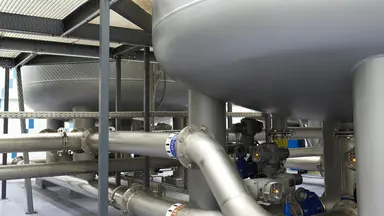
What makes waterworks susceptible to condensation?

Maintaining the right humidity levels in waterworks
Need help with choosing the right solution? Our team of over 100 climate control experts can assist.
You can also reach out or join the discussion on our Social Media. Check out our LinkedIn page.
